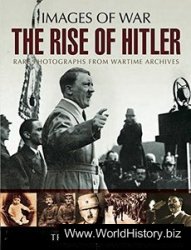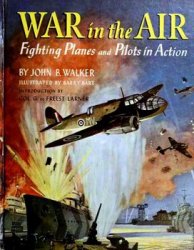Members of several religious and humanitarian groups devoted to reforming the government’s dealings with Indians meet for the first of 35 annual conferences in the resort town of Lake Mohonk, New York. The conference participants, who call themselves “Friends of the Indian” (see entry for DE CEMBER 1882), are mostly Protestant non-Indian reformers who believe the best way of protecting Native American rights and land is to encourage Indians to assimilate into mainstream American society.
During the late 19 th and early 20th centuries, the Lake Mohonk conferences will have a great deal of influence on U. S. Indian policy and legislation. Their efforts will help lead to the passage of the General Allotment Act (see entry for FEBRUARY 8, 1887), which will aim to “civilize” Indian males by making them into private landowners.
“The Indian must be made to be intelligently selfish. . . . [He must be taken] out of. . . blankets and [put] into trousers — and trousers with a pocket in them, and a pocket that aches to be filled with dollars.”
—Merrill Gates, the president of Amherst College, at the Lake Mohonk Conference of 1883
John Slocum founds the Indian Shaker Church.
Salish Indian John Slocum falls ill, prompting his father to ask an Indian healer for help. He does so against the wishes of Slocum’s wife, Mary, who holds that Slocum had sworn off traditional medicine during another illness a year before. According to Slocum, the previous illness killed him but he rose up from the dead while his neighbors were searching for a coffin. During the experience, Slocum claims that he encountered God, who told Slocum that he would grant salvation to all Indians who swore off gambling, drinking, smoking, and consulting Indian healers. God also promised to give these Indians a far greater healing power than their medicine people possessed.
During Slocum’s second illness, Mary begins to speak to God, weeping and shaking uncontrollably. As she prays over his body, Slocum recovers. He attributes his miraculous cure to Mary’s shaking, which he sees as the promised medicine from God. Slocum spreads word of his revelation and cure, initiating the Indian Shaker movement, which will eventually spread through the Indian populations of Washington State, Oregon, northern California, and British Columbia. (See also entry for 1927.)
Mormon missionaries arrive among the Catawba.
Soon after their arrival on the Catawba’s South Carolina reservation, representatives of the Mormon church find a large number of willing converts. The Catawba are attracted to Mormon-ism in part because, like themselves, the Mormons are discriminated against by their white neighbors. The missionaries also help establish schools for the Indians, who are barred from attending either white or black institutions in the area. Over the following decades, Mormonism will prove such a compelling force that it will help unify and revitalize the tribe.
Sarah Winnemucca’s Life among the Piutes is published.
The first book published in English by an American Indian woman, Life among the Piutes combines a tribal history of the Northern Paiute with the autobiography of its author, Sarah Winnemucca. Winnemucca publishes the book to raise funds for an eastern lecture tour. Winnemucca tells her audiences, primarily wealthy whites, of the plight of her people, who were forced to leave their homeland following the Bannock War (see entry for MAY TO SEPTEMBER 1878). During the war, Winnemucca served as an interpreter for General Oliver O. Howard, who led U. S. troops against Bannock and Northern Paiute (Numu) rebels.
The Bureau of Indian Affairs (BIA) creates Courts of Indian Offenses.
Intended to punish Indians who violate a ban on holding traditional religious ceremonies such as the Sun Dance, the Bureau of Indian Affairs (BIA) establishes Courts of Indian Offenses on reservations. In the past, most reservation disputes were informally settled by non-Indian agents. The new courts allow the three highest-ranking members of a reservation’s police force (see entry for 1878) to try residents for minor offenses. Recognizing the inherent conflict in policemen serving as judges,
Congress will soon provide funds for hiring three Indian judges for each tribal court.
Among the offenses the Indian courts are charged to try is the performance of what Secretary of the Interior H. M. Teller refers to as “old heathenish dances.” Teller holds that in addition to being un-Christian, traditional ceremonies “stimulate the warlike passions” and are therefore a threat to the peace.
“Buffalo Bill’s Wild West” premieres.
Masterminded by William “Buffalo Bill” Cody (see entry for JULY 17, 1876), “Buffalo Bill’s Wild West and Congress of the Rough Riders” opens in Omaha, Nebraska. The show is one of about 50 traveling productions featuring sharpshooting, trick riding, and dramatic recreations of events in American history, particularly famous battles between the U. S. Army and Plains Indians.
“A Host of Western Celebrities; A Camp of Cheyenne, Arapahoe, Sioux and Pawnee Indians; A Group of Mexican Vaqueros; Round-up of Western Cow-Boys; Company of Prairie Scouts; A Herd of Wild Buffalos; A Corral of Indian Ponies; A Band of Mountain Elk; A Drove of Texas Steers; Pack-Train of Mexican Burros; Mountain Lions, Coyottes, Deer, Antelope, Mountain Sheep, etc.”
—attractions on an 1886 program for “Buffalo Bill’s Wild West”
Among the biggest draws of the show are the actual Indians and cowboys Cody hires as performers. The Indians enact scenes that reinforce white stereotypes of Indian people. The performers, however, benefit from the experience in several ways. At the very least, it offers them a source of income in an era when Plains Indians have few ways of making a living. Working in the show also gives Indians a chance to travel and, perhaps most importantly, a forum in which to display the superior horsemanship and marksmanship that has long been a source of intense pride for young Indian men of the Plains.
Cody, a former U. S. Army scout, is already a popular hero because of the embellished accounts of his exploits in the West written by “dime” novelist Ned Buntline. His show is an instant success, largely because of his skills at marketing his own image and because the myths of the “wild West” hold special appeal for his American and European audiences. (See also entry for JUNE TO OCTOBER
U. S. troops penetrate an Apache mountain hideout.
Determined to end raids by the Apache followers of Geronimo (see entry for OCTOBER 1881), General George Crook enlists the assistance of Apache scouts. With their help, his men find and attack the Apache led by Chato in the Sierre Madre. The leaders of the runaway Apache, alarmed by Crook’s ability to persuade fellow tribesmen to fight

A 1907 publicity photograph of William “Buffalo Bill” Cody with his cast of Indian performers (Wyoming State Archives, Department of State Parks and Cultural Resources)
Against them, agree to meet with him in council. In the meeting, the general threatens to kill them all if they refuse to give themselves up. After much discussion among the leaders, Geronimo tells Crook that his people will surrender. (See also entry for MAY 1885.)
September
Sitting Bull speaks at the dedication of the Northern Pacific.
Perhaps the most famous Indian in the United States, Lakota chief Sitting Bull is invited to deliver a speech at a ceremony to dedicate the Northern Pacific Railroad in Bismarck, North Dakota. Speaking in his own language, Sitting Bull tells the crowd, “I hate all white people. You are thieves and liars. You have taken away our land and made us outcasts.” His startled translator ignores Sitting Bull’s actual words and reads from the laudatory prepared speech that Sitting Bull was supposed to have delivered. The speech receives a standing ovation from the audience.
December 17
The Supreme Court overturns the murder conviction of Crow Dog.
In 1881 a tribal court orders Crow Dog, a Lakota Sioux Indian convicted of killing of another Lakota, to make restitution to his victim’s family (see entry for AUGUST 5, 1881). Seeking a harsher punishment, the territorial court of Dakota also indicted Crow Dog on murder charges. Crow Dog was again convicted and sentenced to death.
Claiming that the Dakota court has no jurisdiction over crimes committed by Indians on reservations, Crow Dog appeals the case to the Supreme Court. Determining that the Dakota court’s action is a threat to Lakota sovereignty, the Supreme Court in Ex parte Crow Dog overturns the conviction and death sentence. The ruling, which outrages the non-Indian legal community, will lead to the passage of the Major Crimes Act (see entry for MARCH 3, 1885).




 World History
World History









